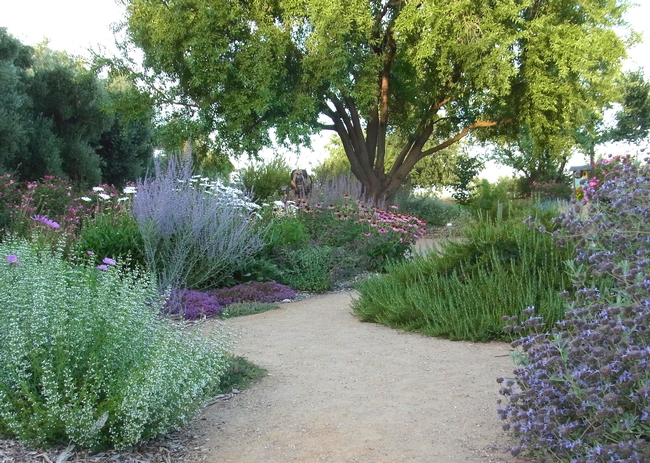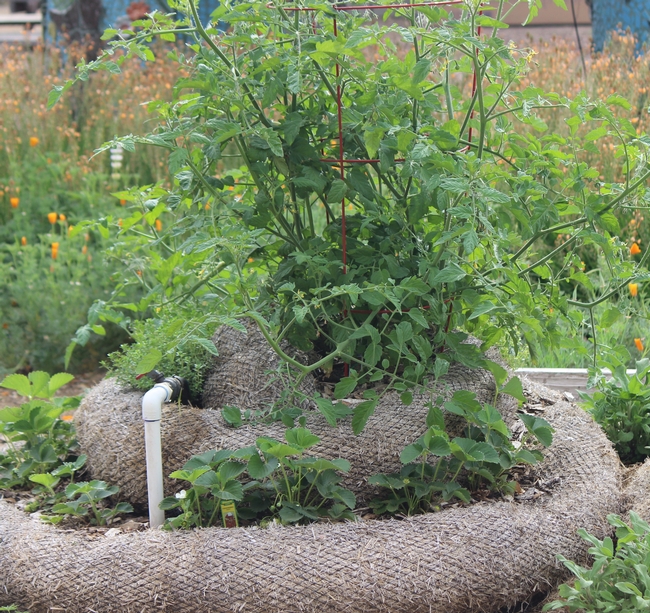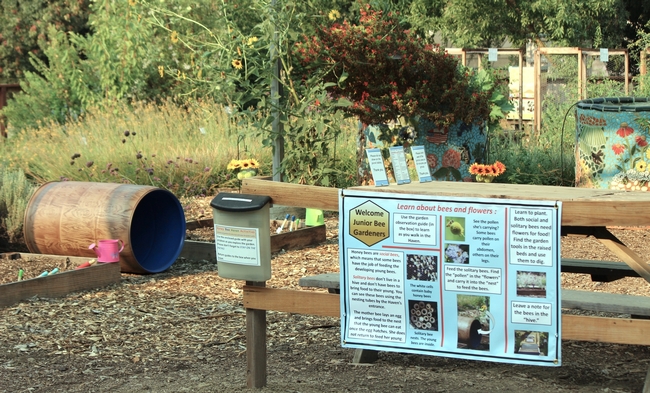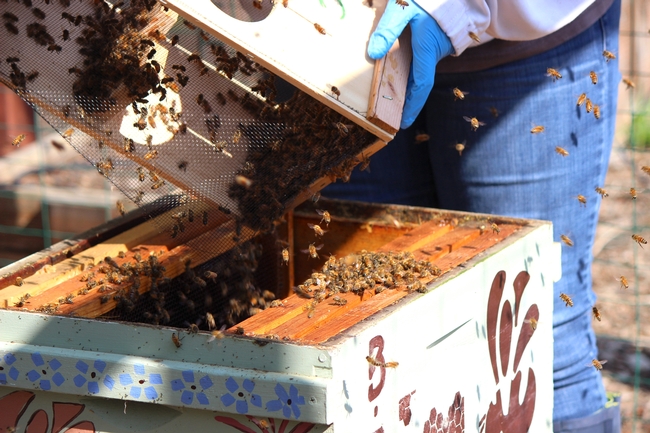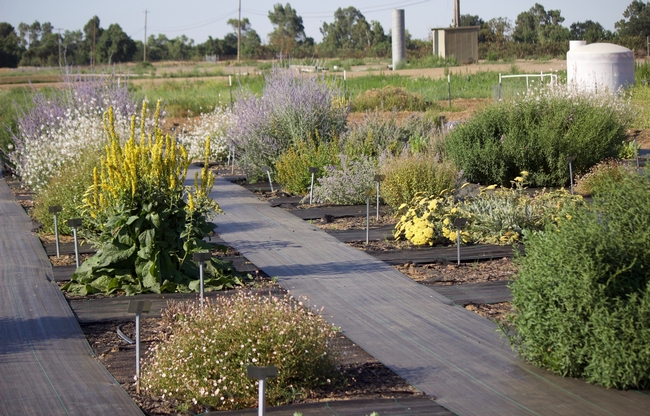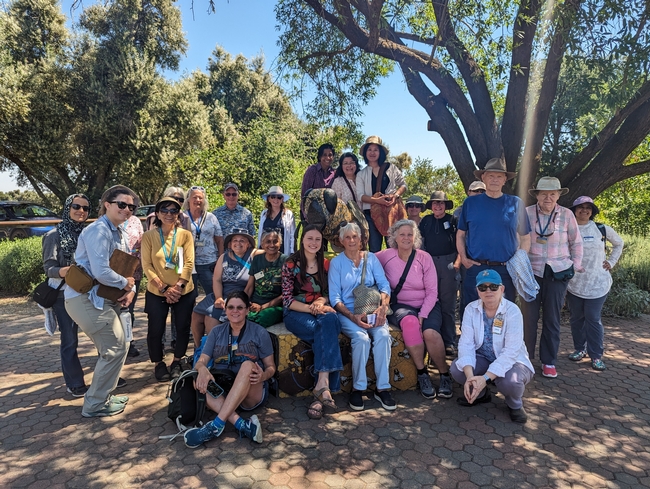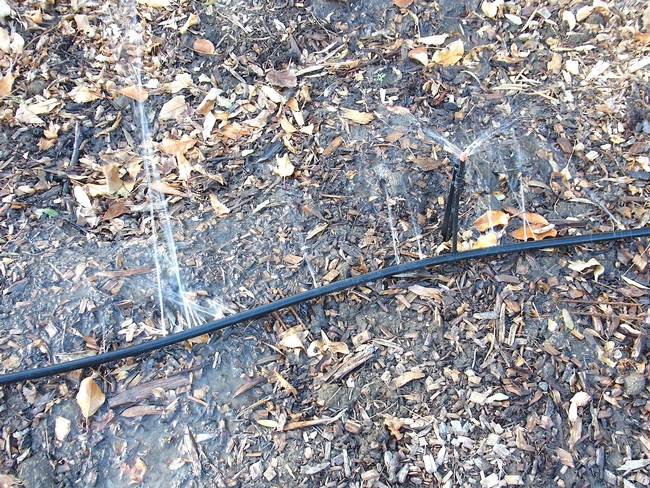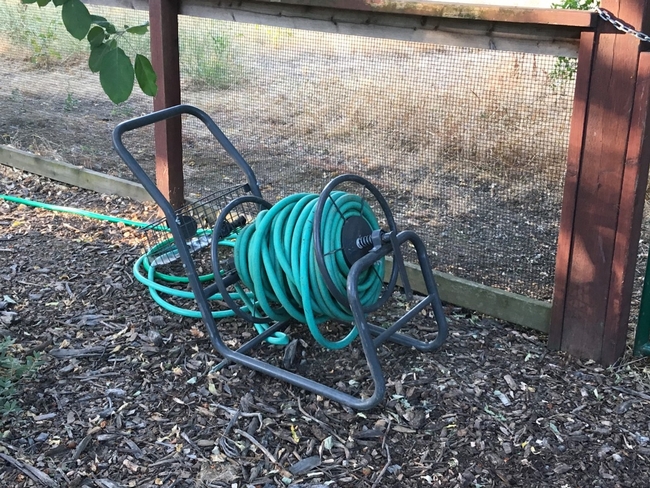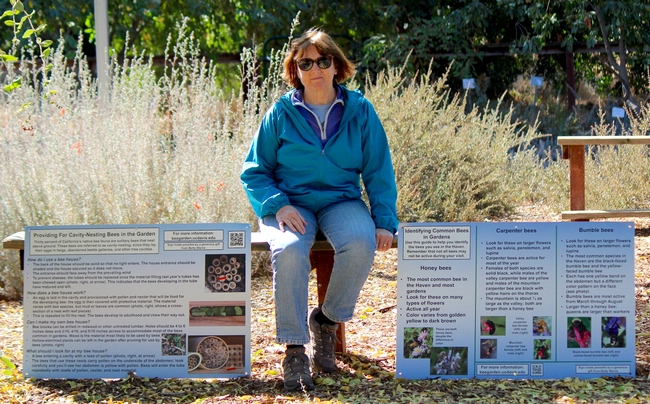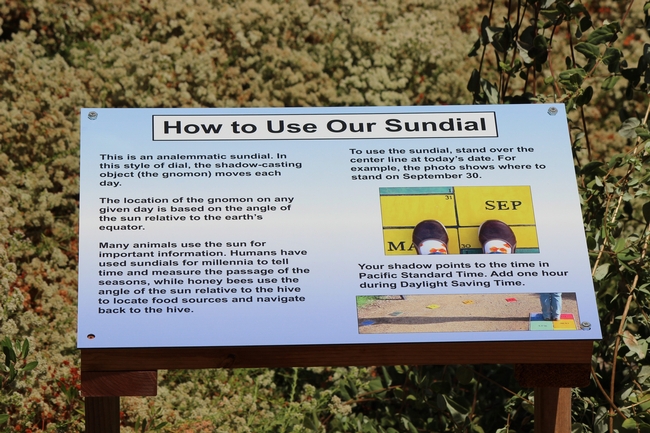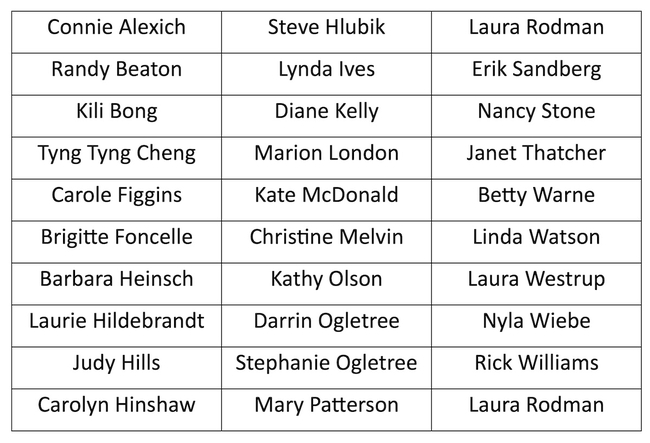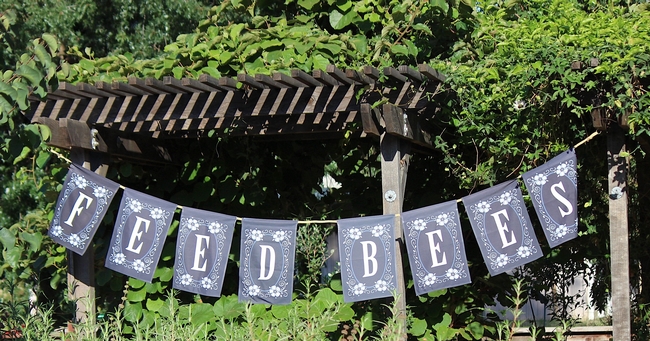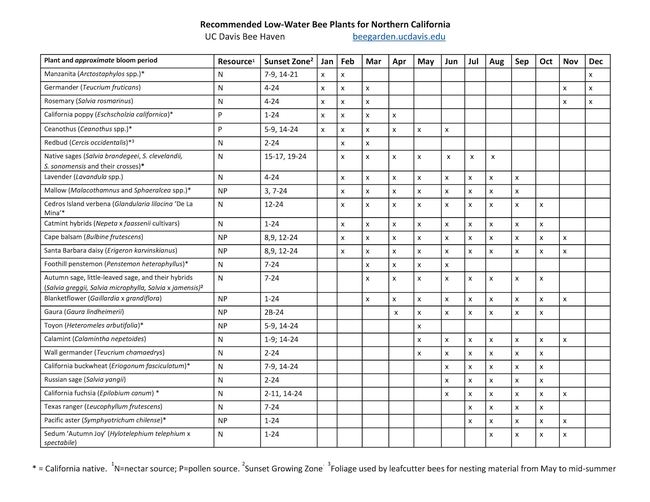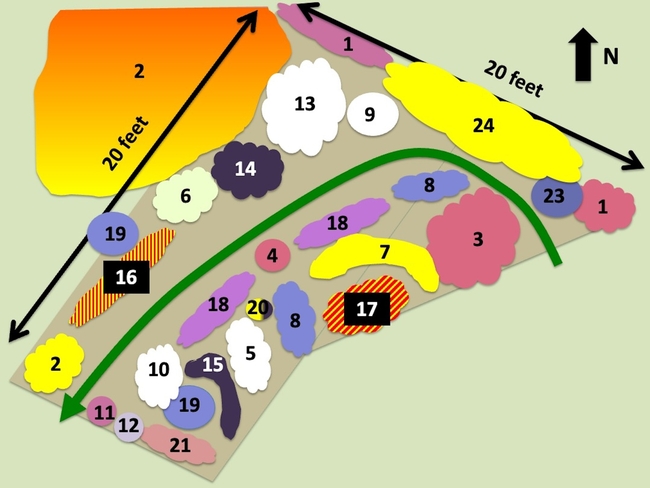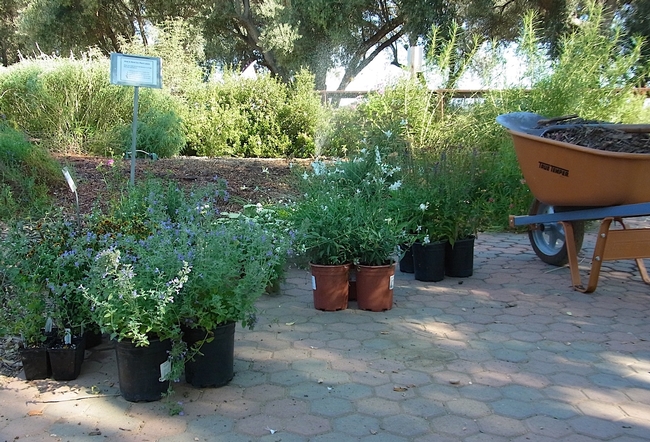- Author: Christine Casey
It began with an idea forged by Häagen-Dazs and UC Davis. Recognizing a need for the public to better understand the link between bees and our food supply, the garden was created in Spring 2009 thanks to a donation from Häagen-Dazs. Working in partnership, a team led by Missy (Borel) Gable of the California Center for Urban Horticulture, the UC Davis Department of Entomology, and Häagen-Dazs developed and judged a design competition and made the garden happen.
I came on board as a full-time manager in 2013 and added outreach programs; that year the Sacramento Bee named the Haven one of the region's top ten public gardens. Financial support from Häagen-Dazs and UC Davis continued until 2015, at which time the garden became self-supporting. A name change to the UC Davis Bee Haven in 2022 reflected this change and the garden's diversity beyond honey bees. Major grant funding and donations during this time came from the US Department of Agriculture's National Institute of Food and Agriculture, the California Department of Food and Agriculture, the Cygnet Foundation, the Woodland Sunrise Rotary, and the Sacramento Area Beekeepers Association. This support, and the time and funds from all donors, is greatly appreciated.
It's been a wonderful 15 years of information and inspiration about bees and the plants that support them. But all good things must end, and at the end of June my position as Haven manager is being eliminated. As described above, and unlike other campus museums, the Haven has never had a dedicated source of support: when grant funds run out, so do I. Regrettably, the last two proposals I've submitted were not selected for funding.
I've enjoyed meeting so many of you through teaching about bees and helping you with your bee gardens. Along with my position, this blog and other Haven outreach will come to an end. But the need for bee gardens goes on. If you're interested in continuing to learn about bees and other insects and how to support them in gardens, please join me on Instagram (@thebloomingbug) and YouTube (youtube.com/thebloomingbug). See you there!
Here are a few highlights from the Haven's history.
As Haven manager, I expanded on the initial garden design by adding more plants to ensure year-round bloom and to introduce visitors to lesser-known bee plants (left). Expansion included ideas about ways to provide for bees in small gardens, such as the use of a straw wattle coil to create a raised bed for vegetables (right).
Additions to the Haven included a children's learning area (left) and a bee hive (right). The children's area was removed during our first funding cut in 2019, as we no longer had the staff to maintain it. The hive remains thanks to staff at the Laidlaw Honey Bee Research Facility.
We moved into bee-plant research in order to obtain grant funding to support the garden. I enjoyed returning to my scientific roots and was proud to have the Haven run by bee scientists for bees. One of our research plots in shown on the left. Research informed our education programs, which included garden tours and classes. On the right is my last-ever tour group, the Santa Clara County Master Gardeners.
There were always challenges! Our top two were squirrels, which damage plant roots and garden irrigation (left), and theft, including shed break-ins and tool destruction (right; who steals the wheels off a hose reel?!?)
As mentioned in a previous blog, volunteers have been the life of the Haven. In addition to their hard work, they have been important donors. Betty Warne provided funding for interpretive signs (left), and Rick Williams designed and built our sundial (right). The dial is now in storage and will be re-installed in a new location.
Thanks to all our supporters for a great 15 years. Happy Bee Gardening!
- Author: Christine Casey
It's simple: the Haven wouldn't be here today without volunteers. Their hard work of pruning, weeding, mulching, and assorted other tasks has made the Haven what it is today. Volunteers are also essential to our outreach events. Since 2014, volunteers have contributed 2813 hours of service, which has a value of $94,207.
Volunteers who have contributed at least 25 hours are listed here. I've enjoyed working with these fantastic people. Thank you to all of them!
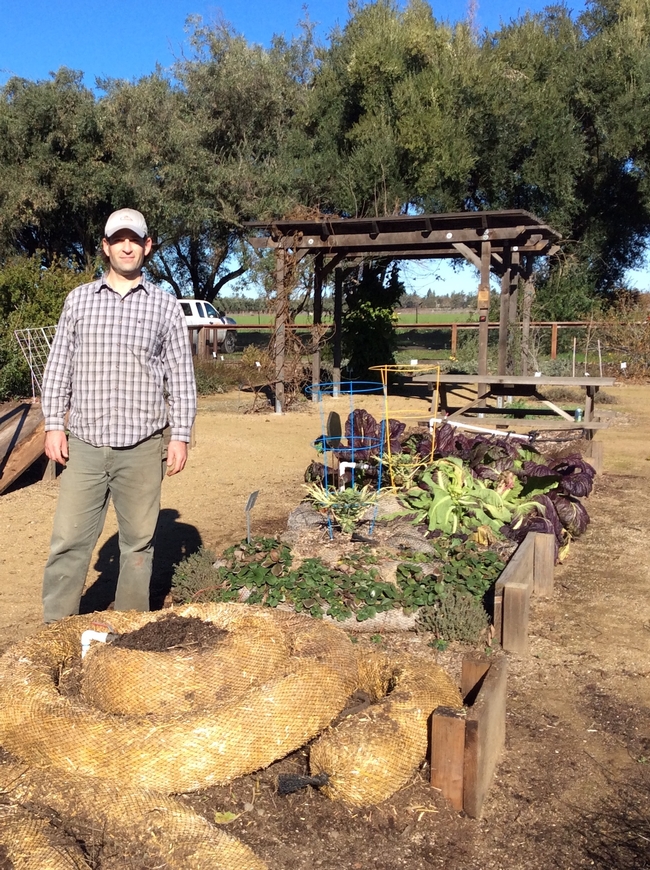
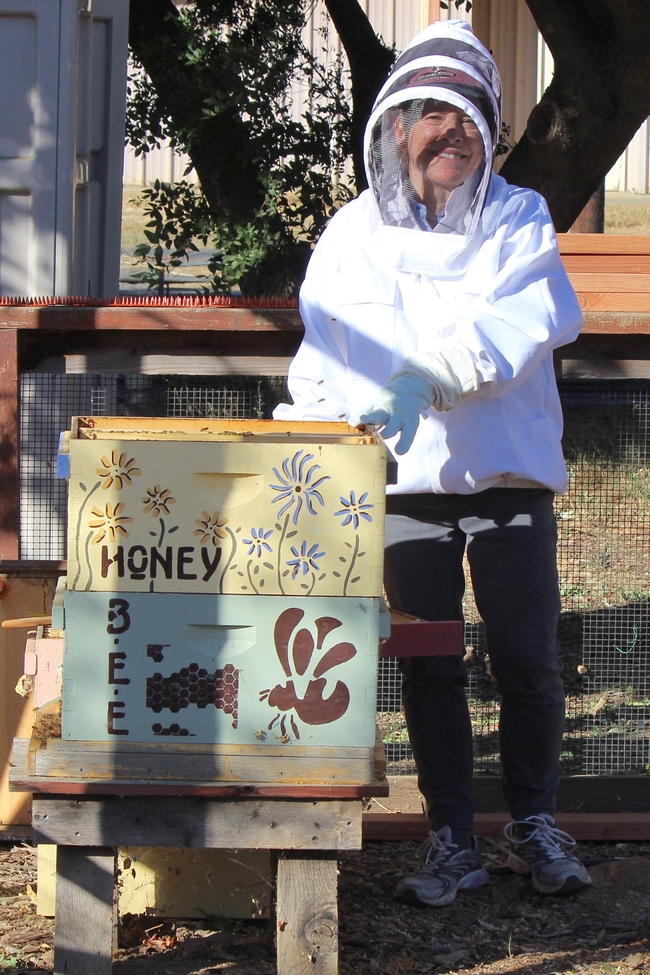
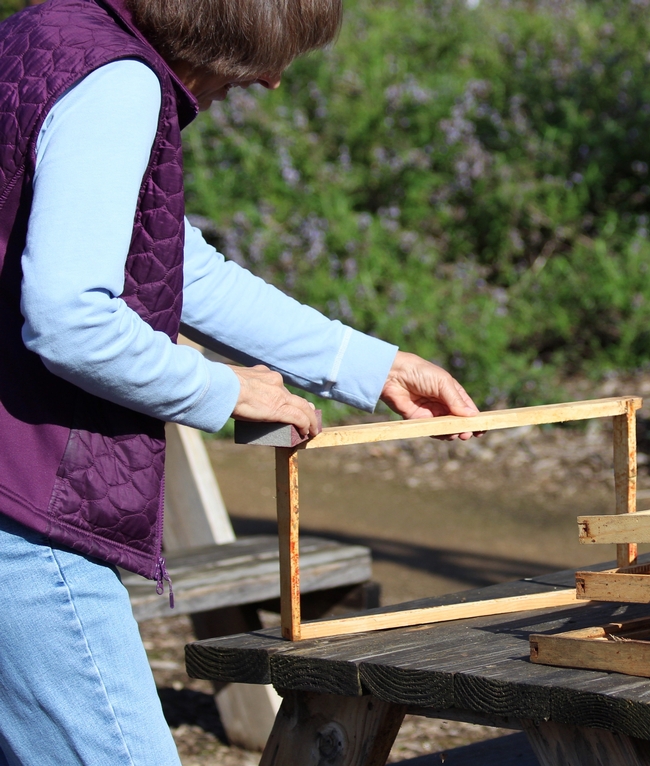
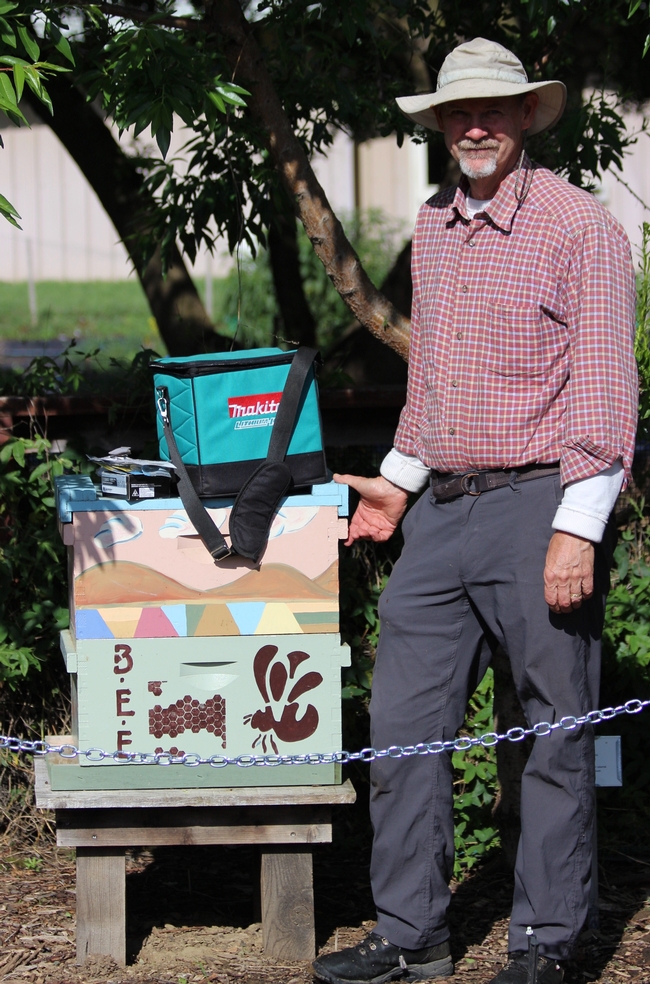
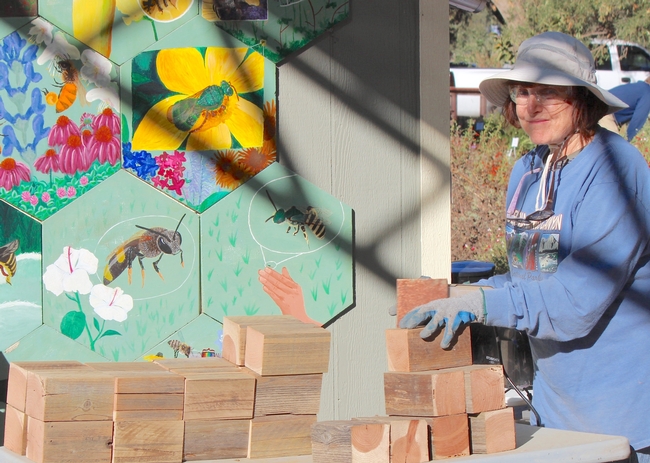
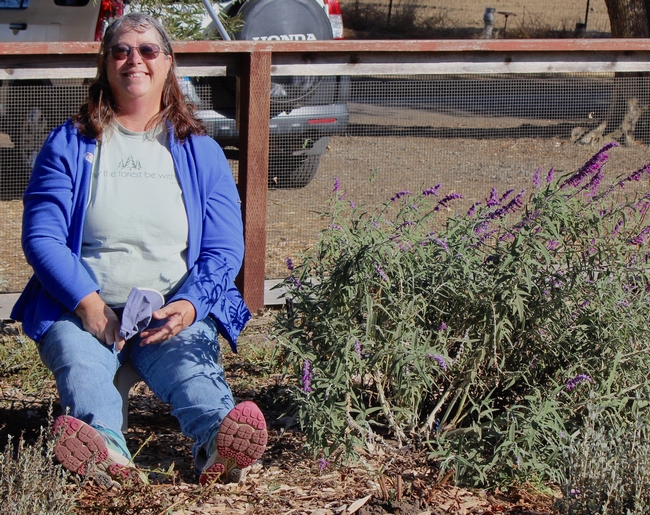
- Author: Christine Casey
As mentioned in my post of May 1, my position at the Haven is being eliminated. Recognizing that the need for bee gardening information will remain, this post is a summary of resource materials, web sites, and nurseries that you may find helpful in the future. This information is not comprehensive, and some of the recommendations --such as the plant lists-- are California-centered.
Bee books
California Bees and Blooms. Heyday Books. ISBN 978-1-59714-294-6
Insects and Gardens. Timber Press. ISBN 0-88192-504-7. Winner of an American Horticultural Society Book Award, 2002.
Bees, Wasps, and Ants: The Indispensable Role of Hymenopters in Gardens. Timber Press. ISBN 978-0-88192-988-1.
The Bees in Your Backyard. Princeton University Press. ISBN 978-0-691-16077-1. Available in a Kindle edition and in a spiral-bound edition. Both are great for taking into the garden.
Gardening books
California Native Plants for the Garden. Cachuma Press. ISBN 0-9628505-8-6
Sunset Western Garden Book. Time Life. ISBN 0-376-03920-5
The California Native Landscape. Timber Press. ISBN 978-1-60469-232-7
Web sites
UC Davis Bee Haven: http://beegarden.ucdavis.edu
UC Berkeley Urban Bee Lab: http://www.helpabee.org/
UC Cooperative Extension San Diego: https://ucanr.edu/sites/PollinatorAttractiveness/
Where to buy bee plants. This is not a complete list or a recommendation.
Davis, Dixon, and Woodland
Lemuria Nursery: https://www.facebook.com/LemuriaNursery
Redwood Barn Nursery: http://redwoodbarn.com/
UC Davis Arboretum plant sales: http://arboretum.ucdavis.edu
Sacramento area
Green Acres Nursery & Supply: http://idiggreenacres.com
The Plant Foundry: https://www.plantfoundry.com
California Native Plant Society plant sales: http://cnps.org/
San Francisco Bay area
Annie's Annuals: https://www.anniesannuals.com/
Berkeley Horticultural Nursery: http://www.berkeleyhort.com/
California Flora Nursery. http://www.calfloranursery.com/
Cottage Gardens of Petaluma: http://www.cottagegardensofpet.com/
Mostly Natives Nursery. http://www.mostlynatives.com/
Watershed Nursery: https://www.watershednursery.com/
California Native Plant Society plant sales. http://cnps.org/
Chico and Redding area
Floral Native Nursery: http://floralnativenursery.com/
Little Red Hen Nursery: https://www.littleredhen.org/pages/plant-nursery
McConnell Arboretum plant sales: https://www.turtlebaynursery.org/
The Plant Barn: http://theplantbarn.com/
California Native Plant Society plant sales: http://cnps.org/
Southern California
Tree of Life Nursery: https://californianativeplants.com/
Las Pilitas Native Plant Nursery: https://www.laspilitas.com/
Theodore Payne Foundation Retail Nursery: https://theodorepayne.org/plants-and-seeds/nursery/
California Native Plant Society plant sales: http://cnps.org/
Soils and water
UC Davis SoilWeb: http://casoilresource.lawr.ucdavis.edu/gmap/
Water Use Classification of Landscape Species (WUCOLS): http://ucanr.edu/sites/WUCOLS/
- Author: Christine Casey
A previous blog covered the steps to take before starting a bee garden. Now it's time to talk about the plants and how to take care of them.
Plant selection depends on many factors, including personal preference, climate, soil type, irrigation frequency, and plant availability. There are numerous bee plant lists available, some of questionable reliability (1). I recommend using a plant list from a reputable source like a university or cooperative extension website. Use national lists based on USDA planting zones carefully. USDA zones are based on average low temperature and place areas with vastly different rainfall and humidity in the same zone. For example, southern Florida and central California are in the same USDA zone; clearly Florida plants won't grow in dry California and visa-versa.
In California, a good starting point is the Haven's list of low-water bee plants shown below.
Once plants have been selected, it's time to place them for planting. Some gardeners like to plant from a plan like this one, while other prefer to 'wing it'. Plant numbers in this diagram refer to numbers on a planting list. I like to come up with a base plan and then alter it by moving plants around to their final position.
Dig a hole that's slightly wider than the root ball. If you're planting at time when it hasn't rained for at least a week, I suggest filling the hole with water and letting it drain before placing the plant. Refill the hole with the native soil after planting. Tamp down the soil, water, and mulch. The low-water plants widely used in California gardens should be planted slightly higher than the ground level to ensure good drainage. Water needs in a new garden will vary with the plants, site, soil, and weather. A general rule is to water daily the first 7 to 10 days, every other day for the next 7 to 10 days, and then weekly the rest of the summer.
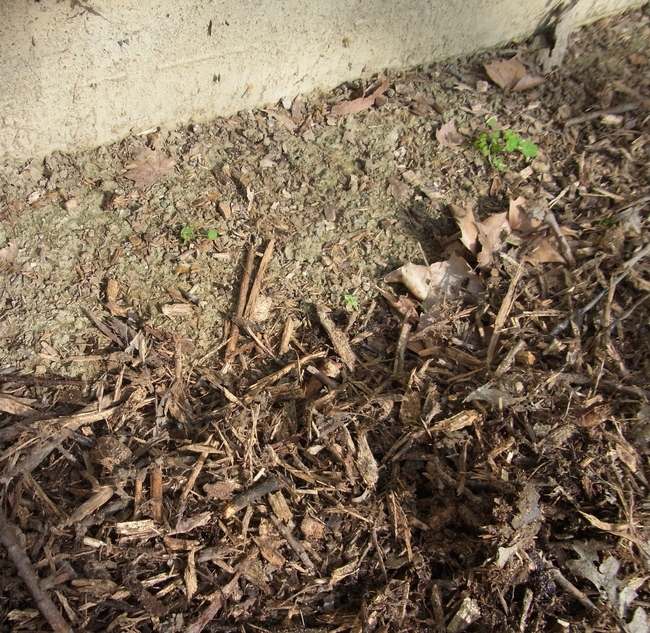
It's also important to leave some bare soil for ground nesting bees. It doesn't have to be a large area; leaving a mulch-free area along a foundation, as shown here, is fine.
High insect diversity in the wild is seen at the edges where two different habitats meet, such as a forest and a meadow. Recreate this in your garden by placing your bee garden to run along the front of a shrub border. Grouping plants of the same species together also makes bee foraging more efficient. For more ideas about bee garden design drawn from research, see this previous post.
Bee garden maintenance comes down to one word: pruning. It's essential to deadhead as frequently as possible to ensure constant new flower growth. And in the winter, do hard pruning of semi-woody shrubs like sages: at the Haven we remove about 2/3 of the plant's growth. This stimulates lots of new shoots, which flower more than older wood.
References
1. Garbuzov, M. and F. Ratnieks. 2014. Listmania: The strengths and weaknesses of lists of garden plants to help pollinators. Bioscience 64: 1019-1026.
2. Majewska, A. and S. Altizer. 2018. Planting gardens to support insect pollinators. Conservation Biology 34(1): 15-25. PDF of this paper is here.
- Author: Christine Casey
I've spoken with countless gardeners over the years who wish to start their own bee haven. That's great -- the bees need all the help we can give them. But the most misunderstood part of the process is how much preparation needs to take place before a single plant goes in the ground.
As the Haven winds down, I'd like to share some tips on preparing to install your own bee garden.
Many gardeners are removing a turf lawn to create their bee haven. It's important to take the time to do this correctly so your garden doesn't revert to a weedy mess. UC IPM has great information about turf removal, including how to identify your turf species (knowing your species helps with removal) and how to remove existing turf.
If you are opposed to using herbicides to kill your lawn, solarization can also be used. For most lawns it will take longer and be less effective. That is definitely the case for bermudagrass lawns that are common in California. Figure 1 summarizes the pros and cons of various turf removal methods. For more own bermudagrass lawn, I used a combination of herbicides, sheet mulching, and hand removal.
Finally, weed barrier fabric is never recommended. It prevents ground-nesting bees from accessing the soil, traps weed seeds that grow through the fabric and become impossible to remove, and breaks down over time to leach microplastics into the ground.
Whatever methods you use, patience is key. Plan on at least one year of preparation before planting.
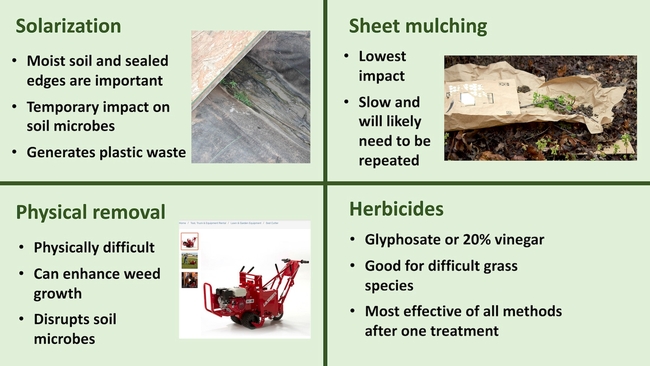
It's also essential to know your soil type and its physical characteristics. Jar tests and drainage tests provide important information about how your soil will hold water. In California, the UC Davis Soil Web has detailed soil maps; these may be less accurate if you are in a new development where there has been recent soil disturbance or addition of new topsoil.
Finally, watch the pattern of sun and shade in your garden for a year before planting. Many winter-blooming 'full sun' plants will do fine under deciduous trees as they are in full sun when flower buds are forming. In the hotter part of California, some 'full sun' plants may need shade in afternoon.
The final task while you're in the process of killing your lawn is to learn about and choose plants for your garden. Garden tours are a great way to start this process....you'll see what grows in your area and have the chance to speak to other gardeners. These are often sponsored by municipal water authorities. Botanic gardens and independent garden centers with knowledgeable staff are other great resources.
The UC Master Gardener program has trained volunteers throughout the state to provide research-based gardening information. They are a fantastic resource and hold educational programs like this one for the public. Finally, garden clubs and the California Native Plant Society hold tours, plant sales, and educational events.


